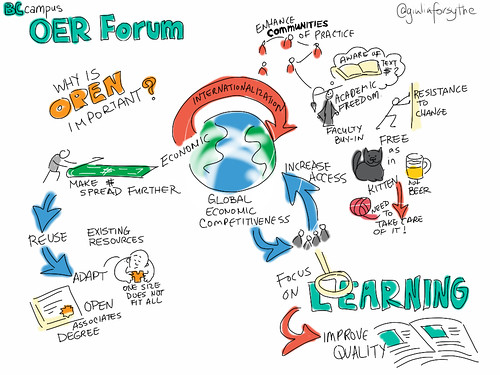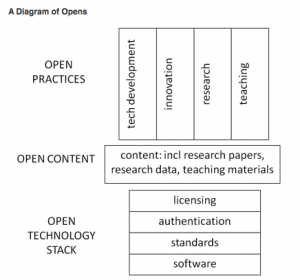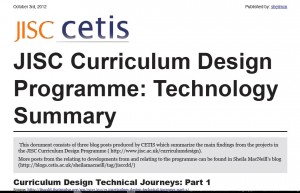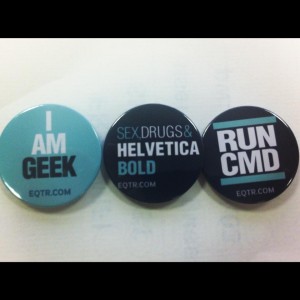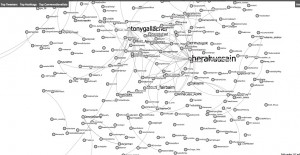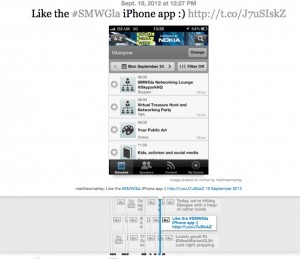A couple of tricky questions in that title, but hopefully some answers are are provided in a series of papers we are launching today.
The CETIS Analytics Series consists of 11 papers, written by a range of our staff (and some commissioned pieces) looking at a range of topics relevant to Analytics in education. The series is intended to provide a broad landscape of the history, context, issues and technologies of Analytics in post 16 education, and in particular the UK context.
As this diagram below illustrates, the series covers four main areas: “big issues” which consists of in depth reports on issues relating to the whole institution including ethical and legal, learning and teaching, research management; “history and context” which looks at the history and development of analytics in more generally; “practice” which looks some of the issues around implementing analytics particularly in HE institutions; and “technology” which reviews a number of technologies and tools available just now.
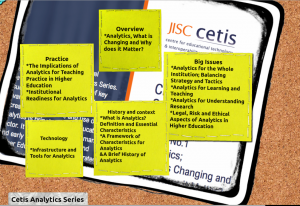
(click graphic to see larger image)
The series provides a background, critique and pointers to current and future developments to help managers and early adopters develop their thinking and practice around the use of analytics. As Adam Cooper highlights
“Analytics is the process of developing actionable insights through problem definition and the application of statistical models and analysis against existing and/or simulated future data.”
We hope that the papers will help people in developing processes to not only identify actionable insights, but also how to develop processes, and more importantly, the staff/student skills and literacies, to produce measurable impacts across the range of activities undertaken in educational organisations such as universities and colleges. As Nate Silver demonstrated in the recent US election, it’s not just about having the data, it’s being able make sense of it and communicate findings effectively that makes the difference.
Given the that this is a rapidly developing field, it is impossible to cover every everything, but we hope that the papers will provide a solid basis for discussion and pointers for further work. Of course as well as the papers, we continue to report on our work and thoughts around data and analytics. For example, over the past month or so, Sharon Perry has been summarising a number of significant outputs and findings from the JISC Relationship Management Programme on her blog. Next week we co-host the inaugural UK SoLAR Flare with colleges from the OU (UK) which will provide another opportunity to help identify key areas for further research and collaboration.
We’ll be publishing the papers between now and early January, and each will have an accompanying blog post providing bit more context for each and the opportunity for feedback and discussion. Below is a list of titles with the week of its publication.
* Analytics for the Whole Institution; Balancing Strategy and Tactics (19th November)
* Analytics for Learning and Teaching (22 November)
* Analytics for Understanding Research (22 November)
* What is Analytics? Definition and Essential Characteristics (4 December)
* Legal, Risk and Ethical Aspects of Analytics in Higher Education (4 December)
* A Framework of Characteristics for Analytics (18 December)
* Institutional Readiness for Analytics (19 December)
* A Brief History of Analytics (8 January)
* The Implications of Analytics for Teaching Practice in Higher Education (8 January)
* Infrastructure and Tools for Analytics (15 January)
Today we start with an overview briefing paper which provides and overview and sets the context for the series. You can download the paper from the link below.
*Analytics, what is changing and why does it matter ? briefing paper.
